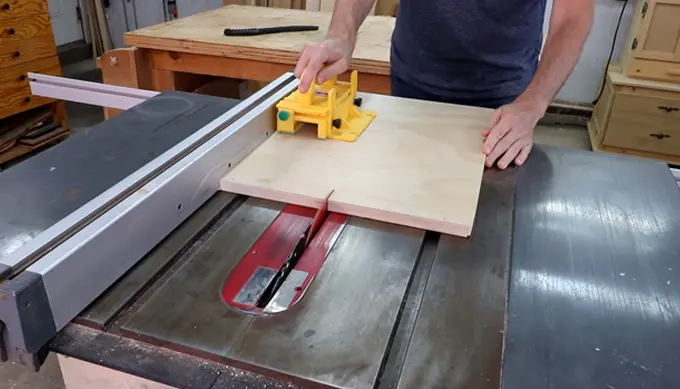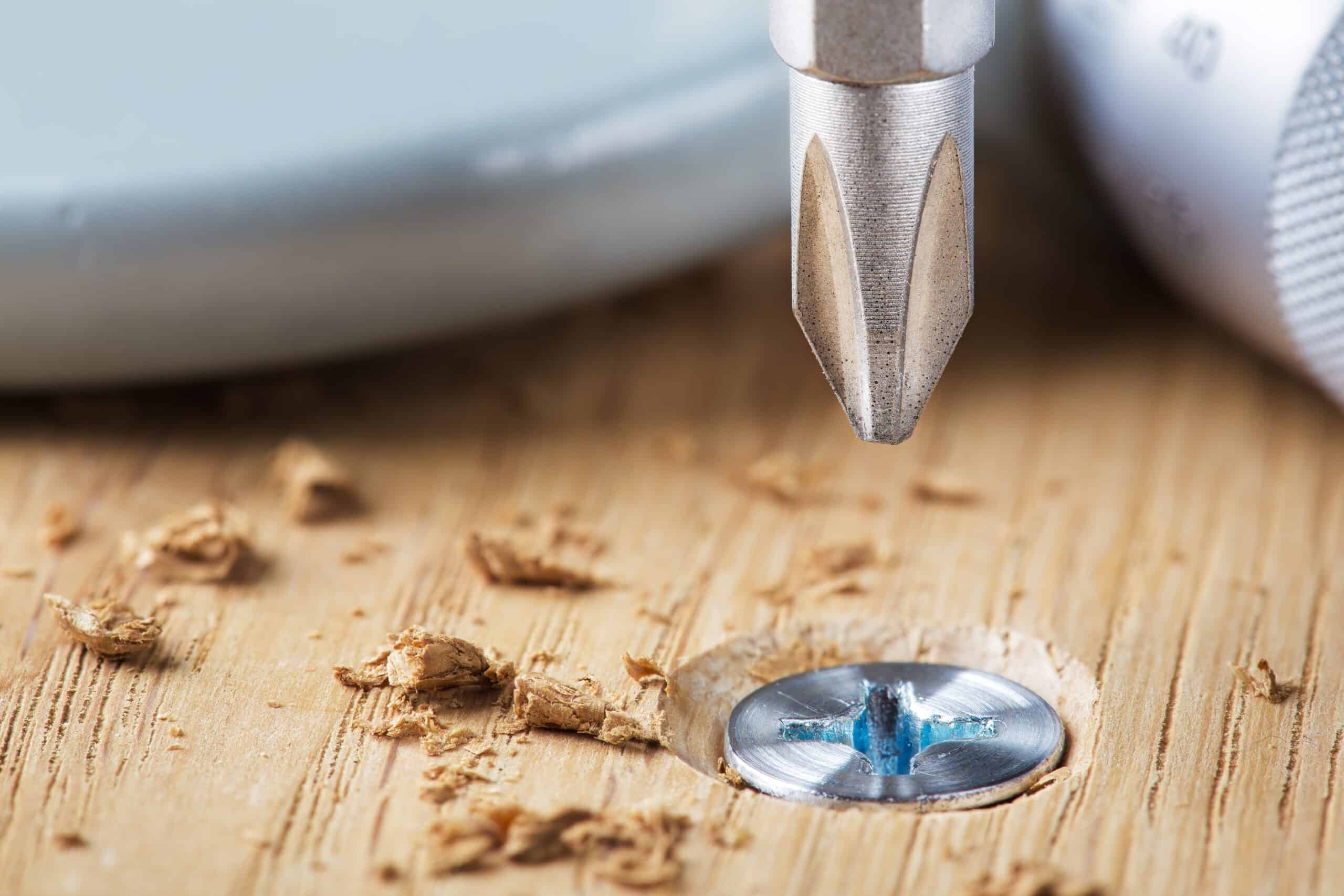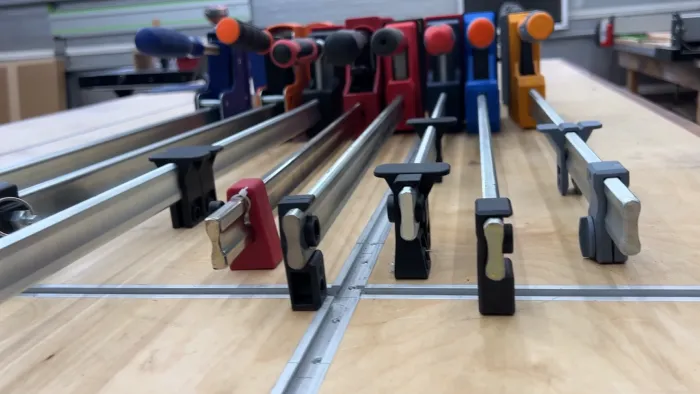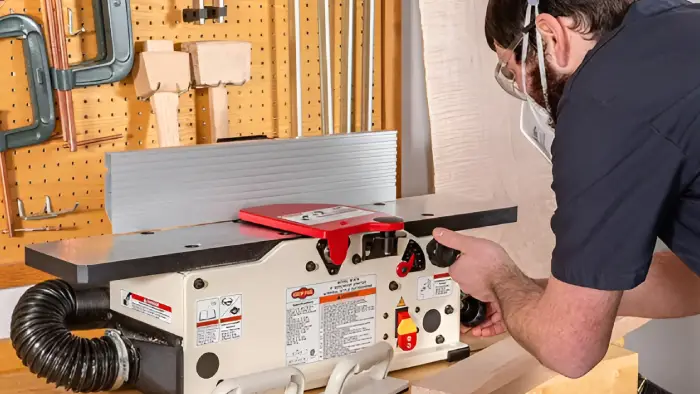WoodenuKnow.com is a participant in the Amazon Services LLC Associates Program, an affiliate advertising program designed to provide a means for sites to earn advertising fees by advertising and linking to Amazon.com and may earn from qualifying purchases.
Any woodworker will tell you that table saws are essential for anyone looking to enter carpentry. They allow for quick, precise cuts that would be difficult to make by hand. Then again, many people are turned off by the loud noise that table saws make.
Excessive noise can damage your hearing and create a less-than-ideal work environment. Fortunately, there are a few ways you can reduce table saw noise. In this blog post, we’ll give you some tips on reducing the noise of your table saw so you can enjoy woodworking without disturbing the peace.
How to Reduce Table Saw Noise : 5 Methods
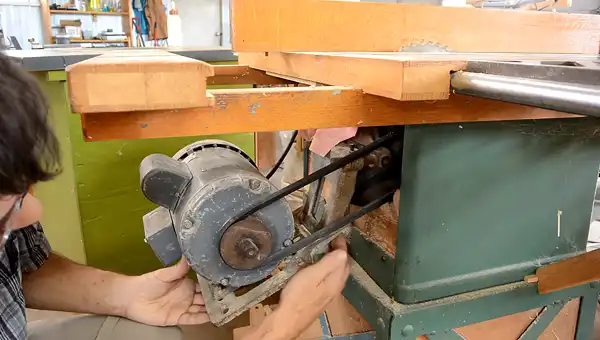
We will now discuss a few ways to reduce the amount of noise generated by your table saw. Here are some tips on how to make your saw quieter.
Sound Dampening Mats
One way to reduce the noise emitted by a table saw is to use a sound-dampening mat. These mats are designed to absorb vibration and reduce the amount of noise that is transmitted through the floor. Simply place the mat under your saw and enjoy reduced noise levels. Apart from reducing noise, a sound-dampening mat can also help to protect your floors from damage.
By absorbing vibration, the mat helps to reduce wear and tear on your flooring, making it last longer. So if you’re looking for a way to minimize table saw noise, a sound-dampening mat is definitely worth considering.
Maintain Your Saw
You can do a few things to reduce the noise of your saw. First, make sure your saw is properly maintained. A well-oiled and sharpened saw will run more smoothly and quietly than one that is neglected. Be sure to regularly oil and sharpen your blade for best results. Second, use a blade with fewer teeth.
A blade with fewer teeth will create less friction and thus produce less noise. Try using a sound-dampening material such as rubber or foam on the saw table. This will help to absorb some of the noise created by the saw blade. By following these tips, you can help to lower the sound of your saw and make your work environment more pleasant.
Lower Speed Setting
If you want to minimize the noise your table saw produces, a straightforward solution is to use a lower speed setting. This will help to minimize the amount and intensity of the sound waves produced by the saw, making it much easier on your ears. Of course, doing this may also mean that your cuts take a bit longer to complete.
But if you don’t need to make rapid cuts, this trade-off is worth it in terms of reducing overall noise levels. Be sure to use sharp blades on your saw, as well-dull blades can produce more noise than sharp ones. By following these simple tips, you can help to make your table saw much more pleasant for you and those around you.
Enclose Your Saw
One way to reduce table saw noise is to enclose the saw in a soundproof box. This will help to muffle the sound of the blade, making it more bearable to work with. Also, soundproofing will help to keep the noise from disturbing your neighbors.
There are several ways to soundproof your table saw, and the best approach will depend on the size and type of saw you have. Enclosing your saw is an effective noise reduction tactic. By taking this simple step, you can make your workspace more pleasant and increase your productivity.
Use Ear Protection
Ear protection is vital to reduce noise, both for the person using the saw and for anyone nearby. There are several types of ear protection available, including earplugs and earmuffs. Earplugs are relatively inexpensive and easy to use, but they can be uncomfortable and may not provide as much noise reduction as earmuffs.
Earmuffs are more expensive, but they offer a better fit and more effective noise reduction. Whichever type of ear protection you choose, ensure it is rated for table saw use and fits appropriately. Wearing ear protection can make a big difference in reducing table saw noise.
These tips will help you significantly reduce the amount of noise your table saw produces. Besides reducing noise, these tips will also help improve the quality of your cuts and prolong the life of your saw blade. So if you’re looking for ways to reduce table saw noise, give these tips a try.
Why are power tools so loud?
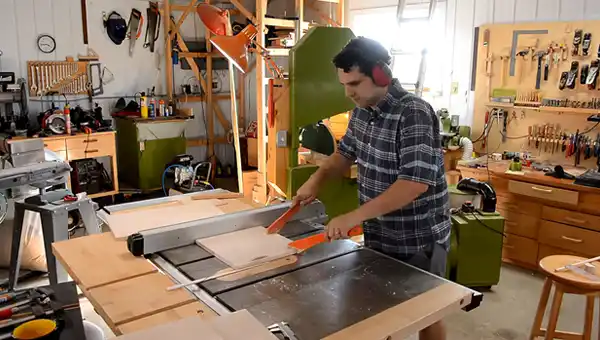
Before diving into the details, let’s take a look at the reasons behind it. Power tools are designed to get the job done quickly and efficiently. Their speed and power come at the cost of noise. So, how come power tools are so loud?
The answer has to do with the way they generate energy. Most power tools rely on internal combustion engines or electric motors. These engines produce rapid pulses of energy that can create a lot of noise. The blades or drill bits on power tools can also create a lot of noise as they come into contact with materials.
The resulting sound can be deafening, making it difficult for workers to communicate or hear warning signals. To mitigate this problem, many companies require workers to wear ear protection when using power tools.
In some cases, power tools may also be restricted to certain times of day to minimize the impact on nearby residents. Despite these efforts, power tools will continue to be a source of noise pollution until quieter alternative technologies are developed.
How loud is a table saw in decibels?
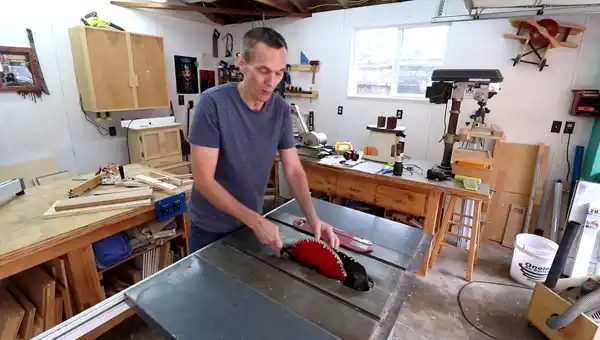
A table saw can be a very loud tool, with the noise level sometimes reaching over 100 decibels. This is well above the level of hearing damage, so it is important to use ear protection when operating a table saw. The noise is produced by the blade cutting through the wood, and it can be amplified by the enclosed space of the workshop. The blades of a table saw spin at high speed, which also contributes to the noise level.
Although table saws are essential for many woodworking projects, they can be dangerous if not used correctly. Aside from the risk of hearing damage, there is also the danger of kickback, which can occur if the blade catches on a piece of wood. For this reason, it is essential to use caution when operating a table saw and to follow all safety precautions.
What type of motor is used in a table saw?
The motor can be either direct-drive or a belt-drive. A direct-drive system uses an induction motor for power. That means the electric motor creates torque through electromagnetic induction. This type of motor is typically more efficient than a belt-drive system and doesn’t require any maintenance. It can be louder and produce more vibration.
A belt-drive system uses a pulley system to transfer power from the motor to the blade. This type of system is often preferred by woodworkers because it runs more smoothly and with less vibration than a direct-drive system. It’s also relatively quiet and easy to maintain. No matter what type of table saw you have, you can be sure that it will help you make precise cuts quickly and easily.
How do I stop my table saw from vibrating?
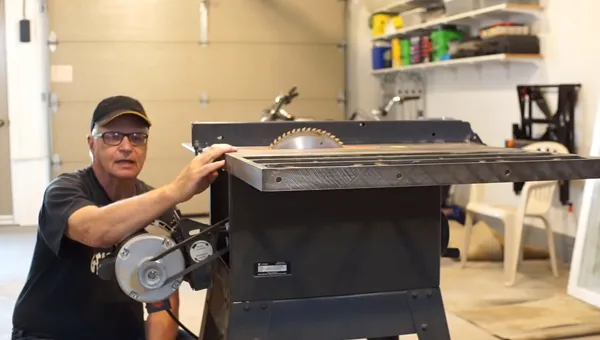
One of the most frustrating things that can happen when using a table saw is having it vibrate. Not only does this make it difficult to get a clean cut, but it can also be dangerous, as the blade may wander off course. A few different things can cause a table saw to vibrate, so it’s important to troubleshoot the problem to figure out the best solution. One common cause of vibration is an unbalanced blade. This can be caused by a dull blade or one that is damaged.
Another possibility is that the arbor nut is loose, which will cause the blade to wobble. Lastly, the table itself may be unstable, which will cause the entire saw to vibrate. To fix a vibrating table saw, check the blade and replace it if necessary. Then, make sure that the arbor nut is tightened correctly. Lastly, check the stability of the table and make any necessary adjustments. By taking these steps, you should be able to stop your table saw from vibrating and get back to making clean, safe cuts.
What causes a table saw blade to whistle?
The answer lies in the way that air moves around the blade. Spinning the blade, it creates a vortex behind each of its teeth. These vortices excite the blade to vibrate, and the resulting vibrations create the characteristic whistling sound. Interestingly, this phenomenon is not unique to table saw blades. Any rotating object with teeth or protrusions can create vortices and produce a similar sound.
For example, you might have noticed that your car engine makes a whining noise when idling. This is because the engine’s rotating components also create air vortices that cause the engine to vibrate. So next time you hear a table saw blade whistling, just remember that you’re hearing the sound of moving air.
How do I stop my saw blade from whistling?
One potential cause of your table saw blade whistling could be that the blade is not tensioned correctly. If the blade is too loose, it can vibrate and cause a whistling sound. To fix this, try tightening the blade until it is snug. You may need to use a wrench or other tool to tighten the bolts that hold the blade in place. Another Possible reason for whistling table saw blades could be that the teeth on the blade are damaged or worn down.
If this is the case, you’ll need to replace the blade with a new one. Make sure that the tabletop is level and that the saw is positioned correctly before you start cutting. This will help to ensure that your cuts are straight and avoid putting undue stress on the blade, which can lead to vibration and whistling.
Which is the quietest table saw?
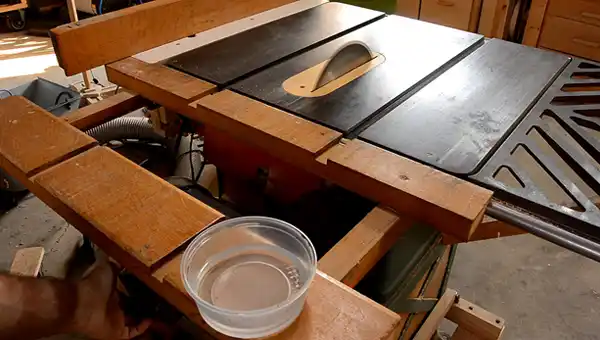
The SKILSAW SPT99T-01 is one of the quietest table saws on the market, making it an excellent choice for anyone who wants to avoid loud noise in their workspace. It’s also one of the most affordable according to the quality, making it a good choice for budget-conscious shoppers. This saw is designed to be picked up and plopped on the workbench, so it’s easy to move around your workspace.
It has a 2-5/8″ cut depth at 90° and 5,300 no-load rpm, making it a versatile tool for various projects. The biggest selling point, though, is the low noise level. At just 84 dB, it’s significantly quieter than other table saws, making it a good option for those who don’t like loud noise.
Your Preference to Reduce Table Saw Noise
If you want to reduce noise quickly and easily, using ear protection is a good option. If you’re looking for a more long-term solution, enclosing your saw in a soundproof box is a good choice.
And to reduce sound while also protecting your floors, using a sound-dampening mat is a great option. Whichever way you choose to reduce table saw noise, following these tips will help you create a more pleasant work environment and increase your productivity.
With a little bit of effort, you can significantly your table saw’s noise. We hope you found this article helpful and that you’ll put these tips to good use. Thanks for reading.
Topics of Discussion:

